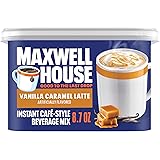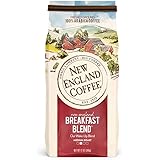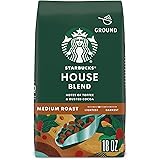Making delicious chocolate coffee at home is simpler than you might imagine, offering a delightful way to customize your morning brew. As demonstrated in the accompanying video, achieving this rich flavor doesn’t necessarily mean adding extra calories, especially when using unsweetened cocoa powder. This method allows for a gourmet experience right in your kitchen, providing complete control over the taste and ingredients.
The Art of Crafting Your Own Chocolate Coffee: A Calorie-Wise Approach
For many coffee enthusiasts, the appeal of a flavored beverage often comes with the hidden cost of added sugars and fats. However, chocolate coffee can be a delightful exception. By carefully selecting ingredients, a full-bodied, chocolate-infused drink can be prepared without the caloric burden typically associated with café-bought options. This approach primarily involves the use of unsweetened cocoa powder, which contributes profound flavor without a significant caloric impact.
It is widely recognized that unsweetened cocoa powder, derived from cacao beans, is remarkably low in calories. A standard tablespoon of unsweetened cocoa powder, for instance, typically contains only around 12-15 calories, along with beneficial antioxidants. This contrasts sharply with many chocolate syrups or pre-flavored coffee beans that are often laden with sugars and artificial additives. The versatility of cocoa powder means that its rich, bitter chocolate notes can be seamlessly integrated into almost any brewing method, ensuring a satisfying depth of flavor.
Essential Ingredients for Perfect Chocolate Coffee
The foundation of any great cup of coffee, chocolate or otherwise, rests on the quality of its components. Careful consideration of each ingredient is paramount to achieving a superior final product:
- Coffee Grounds: The choice of coffee beans profoundly influences the final taste. A medium to dark roast is often preferred for chocolate coffee, as its robust flavor profile stands up well to the richness of cocoa. Arabica beans are generally selected for their complex aromatics and smoother taste.
- Unsweetened Cocoa Powder: This is the secret weapon for calorie-conscious flavoring. Dutch-processed cocoa powder, known for its smoother, less acidic flavor, is frequently chosen for beverages. However, natural cocoa powder can also be used, offering a slightly fruitier and more intense chocolate note.
- Water: Filtered water is consistently recommended for brewing coffee. Impurities in tap water can negatively affect the coffee’s flavor, detracting from the delicate balance of chocolate and coffee notes.
Step-by-Step Chocolate Coffee Creation with Cocoa Powder
The process of infusing coffee with chocolate via cocoa powder is surprisingly straightforward and can be adapted to various brewing equipments. The video prominently features the French press method, which is an excellent choice for this particular recipe due to its immersion brewing style.
Using a French Press:
When a French press is utilized, a specific sequence of steps is typically followed to ensure optimal flavor extraction:
- Prepare Coffee Grounds: Roughly ground coffee beans are measured out and placed into the French press carafe. The quantity of coffee should align with your preferred strength, often around two tablespoons per six ounces of water.
- Add Cocoa Powder: One tablespoon of unsweetened cocoa powder is then added directly to the coffee grounds within the French press. It is advised that the cocoa powder be thoroughly mixed with the grounds, which aids in even distribution during brewing.
- Pour Hot Water: Water, heated to the ideal brewing temperature of approximately 195-205°F (90-96°C), is gently poured over the coffee and cocoa mixture. All grounds should be saturated.
- Steep: A crucial steeping time of about three to four minutes is observed. This duration allows both the coffee and cocoa powder to fully infuse their flavors into the water, creating a harmonious blend.
- Plunge and Serve: Following the steeping period, the plunger is slowly and steadily pressed down, separating the brewed coffee from the grounds and cocoa sediment. The chocolate coffee is then ready to be poured into cups.
Beyond the French Press: Adapting for Other Brewing Methods
While the French press is effective, chocolate coffee can certainly be made with other popular brewing methods. For instance, with a traditional drip coffee maker, it is often recommended that one tablespoon of cocoa powder be added per six cups of coffee. Therefore, for an entire standard pot of coffee, approximately two tablespoons of cocoa powder would be incorporated with the coffee grounds in the filter basket. For pour-over methods, the cocoa powder can be layered with the coffee grounds in the filter, ensuring a thorough saturation during the pour-over process.
Instant Gratification: The Chocolate Syrup Method
Alternatively, for those seeking immediate gratification or a different flavor profile, chocolate syrup can be employed. This method involves brewing a normal cup of coffee and simply stirring in chocolate syrup to taste after the coffee has been poured into your cup. While this approach offers unparalleled convenience, it is important to note that chocolate syrups generally contain significant amounts of sugar and calories, which may be a consideration for health-conscious individuals. For example, a single serving of chocolate syrup can easily add 50-100 calories and 10-20 grams of sugar to a beverage, a substantial difference compared to the near-zero caloric contribution of unsweetened cocoa powder.
Customizing Your Chocolate Coffee Experience
The beauty of homemade chocolate coffee lies in its adaptability. Once the basic brew is prepared, it can be personalized to suit individual preferences. Many enjoy adding a splash of cream or milk, with options ranging from dairy (whole milk, half-and-half) to popular non-dairy alternatives like almond, oat, or soy milk. Each choice subtly alters the texture and flavor profile of the drink. Sweeteners such as sugar, honey, maple syrup, or artificial sweeteners can be incorporated to achieve the desired level of sweetness. For an elevated experience, additional flavorings like a dash of vanilla extract, a sprinkle of cinnamon, or a pinch of cayenne pepper for a subtle spicy kick are often considered, transforming a simple chocolate coffee into a truly artisanal beverage.
Why Make Chocolate Coffee at Home? Unlocking Flavor and Savings
The decision to prepare chocolate coffee at home is frequently driven by several compelling advantages. Firstly, there are considerable financial savings; a homemade cup is dramatically less expensive than a comparable café purchase, which can easily cost $4-6 or more. Over time, these savings accumulate significantly. Secondly, home preparation offers unparalleled control over ingredients, allowing individuals to avoid artificial flavors, excessive sugars, and unwanted additives. This ensures a healthier, more natural beverage. Lastly, the process itself is a rewarding experience, providing an opportunity for culinary creativity and the satisfaction of crafting a perfect cup of chocolate coffee tailored precisely to one’s taste.







